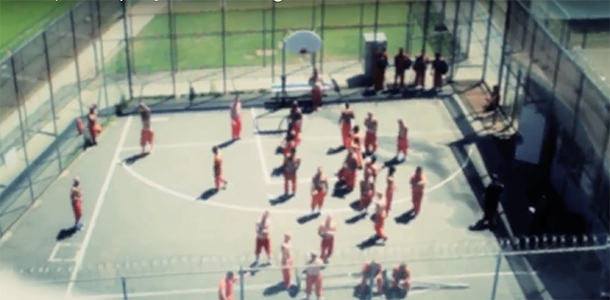
(Photo: Angel Cardenas/CAFwd)
The use of data and its impact on jail populations was highlighted at a statewide conference earlier this year in March. A panel discussion at the Conference of the Forensic Mental Health Association of California focused on the work currently being done in Riverside and San Bernardino Counties with CA Fwd’s Justice System Change Initiative.
CA Fwd conducted jail studies in both counties and found that individuals with mental health needs are booked more often and have longer jail stays than the general population. Knowing this data point, departments within each county, created new programs and cross-system collaborations to tackle this problem.
“Our focus was to help Riverside ensure that there was ample jail space for serious offenders by reducing the use of jail altogether for less serious offenders” said Scott MacDonald of CA Fwd’s JSCI team and the panel moderator. “Our belief was, with the right services in the community and the right engagement you could greatly do that, and those suffering from mental health issues would benefit from such an approach.”
He added, “When smart people get into the room and they say, ‘I want data,’ it gets very complex. I always try to get people to keep it simple. One good data element, bookings per year, is enough to unify. It can be the glue to bring these disparate systems together that breaks down the silos and creates conversation.”
MacDonald presented recommendations for dealing with individuals with serious mental health needs (SMI) in jail including:
- Building data systems for ongoing tracking in jail
- Continuing and building upon multidisciplinary approaches to develop interventions and outcomes and reduce jail reliance
- Build assertive community treatment capacity to support the SMI in the community.
Facing a lawsuit, the Riverside County Sheriff’s Department and Behavioral Health Department started working together to improve services to inmates with mental health needs. Behavioral Health Specialists are embedded in the jails provide one-on-one and group therapy sessions with the goal of transitioning the inmates into the general detention population and eventually back into the community.
“We worked really close with our Mental Health Department to create a mental health classification rating system,” said Riverside County Assistant Sheriff Jerry Gutierrez. He added to that California jails are required to have a classification system to safely house individuals in jail. Traditionally, inmates with mental health needs are all classified that same, even if they had different levels of severity.
“We created a ratings system, one to six, so our staff know what that means in terms of severity,” said Gutierrez, adding that the classification conforms with HIPPA laws. “It helps house these people more appropriately and keeps things balanced.”
To increase successful outcomes, the Sheriff’s Department created a team of deputies inside the jails who are trained to work with inmates with mental health needs and partner with the embedded clinicians. This team of deputies works the same shifts with the same partners, so the inmates and deputies are familiar with each other. And at each shift change, the clinicians and deputies will update the incoming shift on any behavioral changes.
San Bernardino County also created Corrections to a Safer Community (CTASC), a program aimed to reduce recidivism rates for inmates with mental health needs through jail diversion, pre-release engagement and facilitating community re-entry. CTASC is a collaboration between the county’s Behavioral Health Department and the Public Defender’s Office. The team also works with the Sheriff’s Department, the District Attorney’s office and the court system to make sure every department is invested in the individual’s successful outcome.
“We work very closely with our Public Defender’s office on what we call our Rapid Response Team,” said panelist Terri Franklin, deputy director of the San Bernardino Department of Behavioral Health. This team identifies individuals coming into the jail who need the CTASC services, including reentry planning, linking them to services, making sure they receive their medication upon release and transporting them to probation.
Franklin and her team are looking to streamline the process of getting individuals through the system and connected to services. They are also looking at those who are classified as misdemeanants incompetent to stand trial. “The DBH is looking to do an outpatient program. We’re trying to figure out how to do something on the outside of jail so they can really get connected to community resources. Ultimately, I think that’s what we want, so they can get the treatment that they need.”
Representatives from both counties agree that knowing the data – who is in jail, why they are in jail and for how long – is vital to create programs and partnerships that will ensure successful outcomes for inmates with mental health needs.
“This goes back to the data collection, peeling back the first layer of the onion – how many people are going back to jail after we’ve linked them to services,” said MacDonald.
Gutierrez agreed, “We have a lot of resources being thrown at this, the key thing is using the data to make sure we’re being fiscally responsible.”

